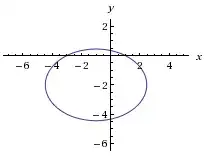I was taught that you could only complete the square of a quadratic if the coefficient on the $x^2$ term is 1.
However, playing a little bit with other quadratics, I've found that it's just not true. Based on the CTS algorithm, you just need to divide the coefficient of the $x$ term by twice the square root of the coefficient of the $x^2$ term.
So, if you have $ax^2 + bx + c$, your perfect square would be $(\sqrt{a}x + \frac{b}{2 \sqrt{a}})^2$
If $a$ is not a perfect square it could get nasty, but then you can just square the whole quadratic and go from there.
For example:
In the equation $5x^2 + 6x + 5 = 0$, we could do:
$25x^2 + 30x + 25 = 0$
$(5x+3)^2 = -16$
$5x+3 = \pm4i$
$x = \pm \frac{4i}{5} - \frac{3}{5}$
My questions are:
-Is this correct?
-Is there ever an advantage to using the quadratic formula?
-Are there quadratics that are unsolvable this way?
